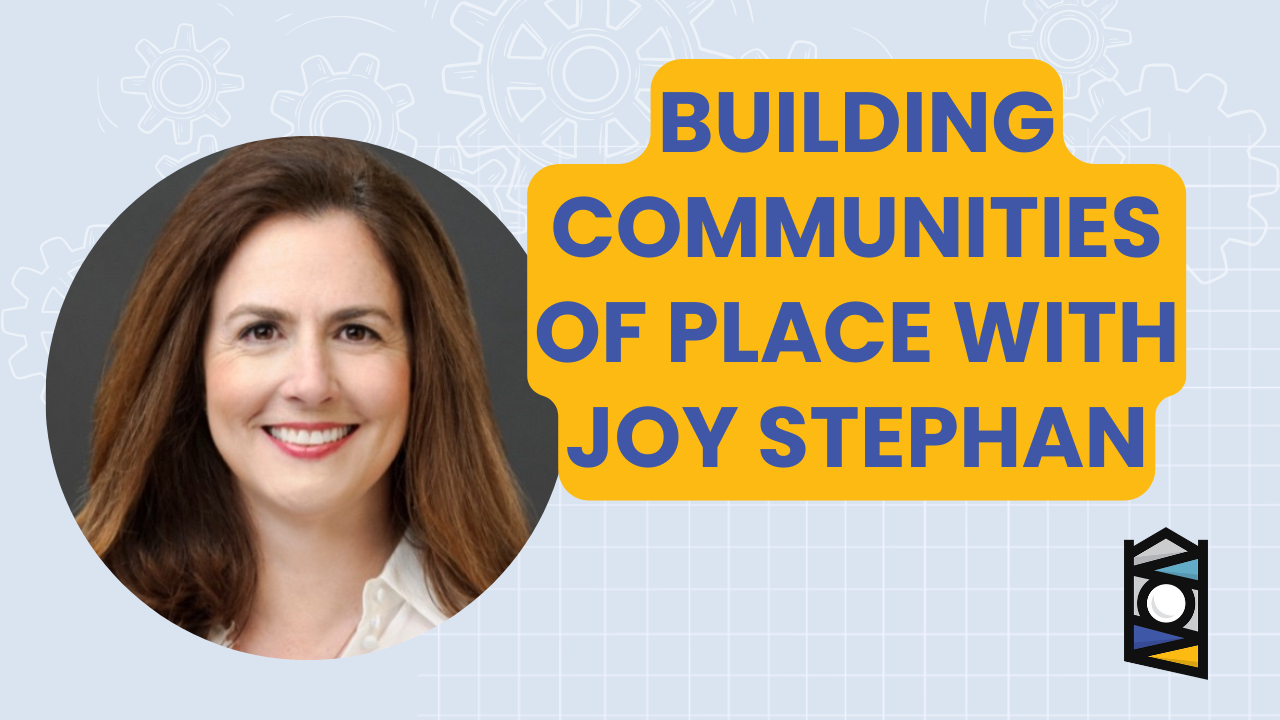Building Stronger Communities: Connecting In-Person and Online Experiences
When I sat down with Joy Stephan of 20Chairs, we had a fascinating conversation about how organizations can bridge the gap between physical spaces and online communities. Joy’s work in building place-based communities—those rooted in physical environments—has led to some remarkable insights that organizations can apply, particularly as they explore blending their in-person and digital interactions.
In my own work building online communities, I’ve seen firsthand how difficult it can be to create a sense of trust and connection among people who may never meet face to face. However, Joy’s experience suggests that there’s a lot to be learned from how physical spaces shape interactions, and that there are fundamental principles that apply to both digital and place-based communities.
The Intersection of Digital and Physical Communities
One of the key takeaways from our conversation was the idea that both online and in-person communities are deeply intertwined. According to Joy, people often reach a point in digital communities where they crave a deeper, face-to-face connection. Similarly, in physical spaces, people might begin with in-person interactions but then seek to continue those connections digitally. This dynamic, as Joy explains, is about recognizing the flow between digital and physical spaces and how they can complement one another.
For instance, in her work with real estate clients, Joy helps organizations think beyond just providing a physical space. It’s not enough to build a beautiful office or event space and expect people to show up and engage. Instead, she advises organizations to think about how people will actually use those spaces and what kind of support they’ll need to be productive and build relationships.
Designing Spaces and Encouraging Conversations
One of the more surprising insights from Joy’s work is how much of community-building comes down to fostering conversations. Whether in person or online, strong communities rely on open communication and the exchange of ideas. In her real estate work, Joy has found that simply designing a space isn’t enough; organizations need to actively encourage and guide people on how to use that space to foster connection. The same goes for online communities—people need guidance and encouragement to participate and engage.
What struck me most in our discussion was Joy’s technique for encouraging people to think differently about the spaces they work in. She often brings together groups of employees and asks a simple question: “Where are you most productive when you’re not at your desk?” This question not only opens the door to understanding different work styles but also helps organizations realize that people’s needs are more diverse than they might think.
Integrating Digital Workspaces
While Joy’s primary focus is on physical spaces, we also discussed how organizations are starting to understand the importance of integrating the digital workspace into these physical environments. As hybrid work models become more common, the line between the digital and physical workplace is blurring, and organizations are grappling with how to create cohesive experiences across both spaces.
Joy pointed out that many organizations still approach these two areas separately. However, the most forward-thinking companies are starting to break down these silos, ensuring that their real estate, IT, and HR teams work together to create environments that support employees holistically. By focusing on the human experience—both in the office and online—organizations can create more seamless, engaging, and productive communities.
Learning from Place-Based Communities
As I reflected on our conversation, it became clear that there’s much to be learned from how physical spaces foster community. While I’ve primarily worked in the digital realm, Joy’s approach to creating environments that facilitate interaction and connection can be applied to any community—whether online or offline. The principles of good community-building remain the same: focus on people’s needs, create spaces that encourage connection, and guide people on how to engage with one another.
For organizations looking to strengthen their community efforts, it’s worth considering how the digital and physical environments can complement each other. Whether it’s bringing a digital community together for in-person events or supporting a workplace culture with digital tools, the future of community-building is hybrid—and it’s essential to think about how to design these spaces, both physical and virtual, with intention.
Conclusion
In the end, building stronger communities, whether online or in person, comes down to creating spaces—both physical and digital—that encourage connection, support diverse work styles, and foster open communication. Joy Stephan’s insights provide a useful roadmap for organizations looking to bridge the gap between their digital and physical community-building efforts.
If you’re looking to enhance your organization’s community experience, consider how these lessons in space design and engagement could apply. I’d be happy to speak with you about it further. As Joy’s work shows, there’s immense value in bringing together the best of both worlds—physical and digital—to create truly thriving communities.

